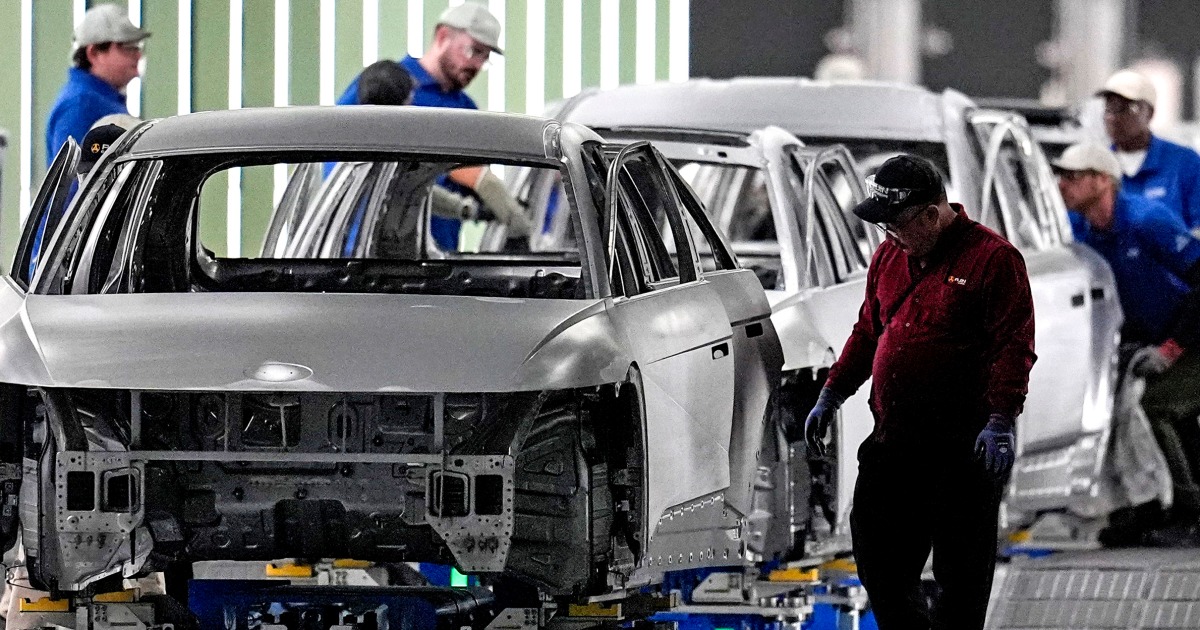Rivian to Build New Factory in Georgia
#rivian #electric_vehicles #georgia #expansion #sustainability

Introduction
Rivian, a leading electric vehicle manufacturer, has announced their plans to build a new factory in Georgia, despite a recent slump in the EV market. The Wall Street Journal reports that the plant is set to open in 2028 and will support the production of two of Rivian's highly anticipated models - the R2 sport-utility vehicle and the smaller R3 crossover. This move is a bold and strategic decision for the company, considering the current challenges in the EV industry.
Rivian's Expansion Plans in Georgia
Rivian's commitment to building a new factory in Georgia is a testament to their ambitious growth plans. The company has already gained recognition for their innovative designs and sustainable practices, and their new facility will only accelerate their progress. With this expansion, Rivian aims to strengthen their presence in the US market and cater to the increasing demand for electric vehicles. The factory is expected to create numerous job opportunities and boost the local economy, reinforcing Rivian’s commitment to not just producing high-quality EVs, but also making a positive impact on society.
The Future of EVs
Despite the current slump in the EV market, Rivian's decision to build a new factory in Georgia is a sign of hope for the future of electric vehicles. With the increasing focus on sustainable and eco-friendly modes of transportation, the demand for EVs is expected to rise
About the Organizations Mentioned
Rivian
## Overview Rivian Automotive, Inc. is an American electric vehicle (EV) manufacturer and automotive technology company that has quickly become one of the most closely watched players in the industry[1]. Founded in 2009 by CEO RJ Scaringe, Rivian is headquartered in Irvine, California, with its main manufacturing plant in Normal, Illinois, and additional facilities in California, Michigan, British Columbia, Arizona, England, and Serbia[1]. The company designs and builds electric SUVs, pickup trucks, and commercial delivery vans, all on a flexible "skateboard" platform that can support a variety of future vehicle types[1]. ## History and Key Achievements Rivian spent its early years developing its proprietary electric vehicle platform and technology in relative secrecy, emerging publicly in 2018 with prototypes of its R1T pickup and R1S SUV. The company began deliveries of the R1T in late 2021, marking a significant milestone as one of the first to bring a fully electric pickup truck to market[1]. Rivian’s vehicles are notable for their off-road capabilities, advanced technology features, and focus on sustainability. The company has also secured major commercial partnerships, most notably with Amazon, for which it produces the Electric Delivery Van (EDV)[1]. This deal is part of Amazon’s commitment to deploy 100,000 custom electric delivery vehicles by 2030, a massive endorsement of Rivian’s technology and manufacturing capacity. Rivian went public in November 2021, raising over $13.5 billion—one of the largest IPOs of the year[1]. ## Current Status and Notable Aspects As of late 2025, Rivian continues to expand its manufacturing footprint, with plans for a $5 billion factory in Georgia that will eventually have an annual production capacity of 400,000 vehicles[1]. The company is also establishing an East Coast headquarters in Atlanta and expanding its global presence with offices in Amsterdam
Wall Street Journal
The *Wall Street Journal* (WSJ) is a premier American daily newspaper specializing in business, financial, and economic news, along with coverage of politics, technology, real estate, and culture. Founded on July 8, 1889, by Charles Dow, Edward Jones, and Charles Bergstresser, it originated from Dow Jones & Company's financial news bulletins called “flimsies,” which were hand-delivered to traders on Wall Street[1][2]. The newspaper quickly established itself as a trusted source for investors and professionals by providing detailed market reporting and analysis from its base in New York City. Historically, the WSJ evolved from brief bulletins into a comprehensive publication, growing in size and influence. Its mission has focused on rigorous, fact-based journalism serving the interests of the financial community and broader business readers. The paper has won multiple Pulitzer Prizes, underscoring its editorial excellence and impact[1]. It has also been recognized as one of the United States' newspapers of record, influencing economic policy debates and business practices worldwide[2]. In the digital era, the WSJ successfully transitioned to online media with the launch of its subscription-based digital edition in 1996, which has since grown to nearly two million digital subscribers by 2019, offsetting declines in print circulation[1]. This digital expansion includes in-depth technology reporting, making it a vital resource for readers interested in the intersection of business and technology. Today, the WSJ remains one of the largest newspapers globally by circulation, maintaining a robust presence in both print and digital formats. It is noted for its comprehensive market data, incisive editorials, and broad coverage that extends beyond finance to include politics, health, and culture, appealing to a diverse readership of business professionals, policymakers, and technology enthusiasts[1][3].









